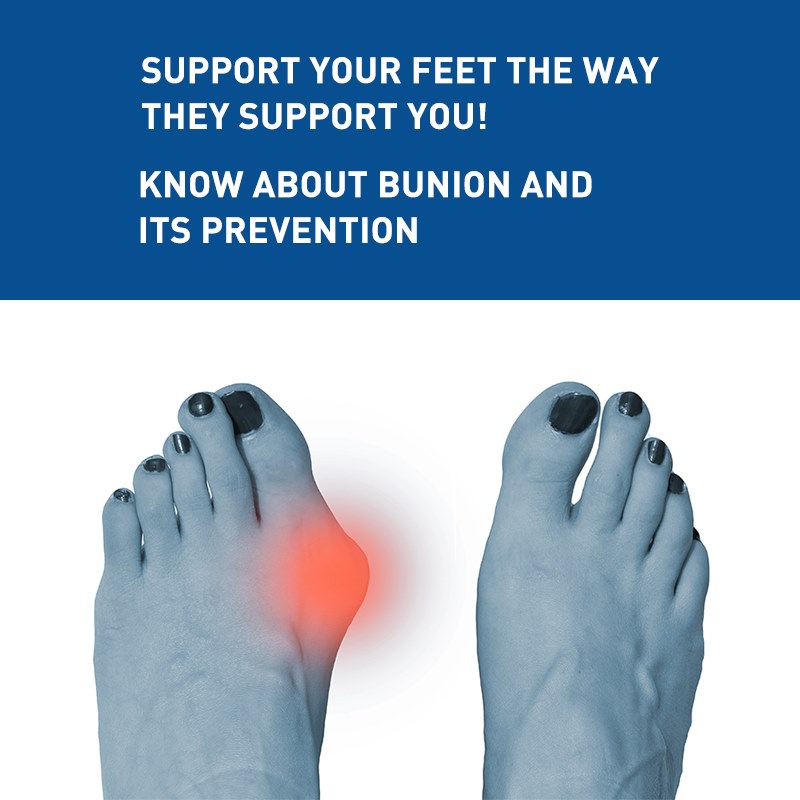Right Foot First – Part 3 (Know about Bunion and its prevention)
The feet take a lot of daily stretch & stress from walking, running, jumping, and climbing, so naturally, they are subject to many different types of problems. Below is a small article on BUNIONS, a bump that develops on the inside of the foot. Read along to get a detailed insight into what it is and it’s prevention.

COMMON FOOT PROBLEMS # 1
Each foot is made up of 28 bones, 30 joints and more than 100 muscles, tendons and ligaments, all of which work together to provide us with support, balance and mobility. According to the College of Podiatry, a person will walk an estimated 150,000 miles in their lifetime, roughly the equivalent of walking around the world six times! It is not hard to see why our feet are highly susceptible to injury, pain and problems.
In this 3/3 of Series ‘ Right Foot First’ let us discuss few common foot conditions.
#1 Bunions
What is it?
The scientific term for bunions is ‘hallux valgus.’ They present as bony bumps on the inner side of the base of the great toe. A bunion forms when your big toe pushes against your next toe, forcing the joint of your big toe to get bigger and stick out. It is
a progressive foot deformity in which the first metatarsophalangeal (MTP) joint or joint at the base of the great toe is affected and is often accompanied by significant functional disability and foot pain
Why do you get one?
A bunion is most likely to develop when susceptible feet are repeatedly squeezed into narrow, pointed-toe footwear. High heels can exacerbate the problem because they tip the body’s weight forward. Shoes with narrow toes can trigger a bunion, but they’re not the underlying cause. Bunions run in families, because foot type (shape and structure) is hereditary, and some types are more prone to bunions than others.
Why does it require attention?
• The MTP joint helps us bear and distribute weight during a range of activities. A bunion can seriously impair the foot’s functioning thereby causing gait disturbance and chronic pain
• Bunion on the big toe can damage the other toes. Under the pressure of the big toe, they may develop corns or hammertoes •Calluses may form, which get inflamed.
• You constantly shift your weight off the painful big toe joint to other toes causing them to hurt
• As the misshapen joint becomes more uncomfortable and harder to fit into shoes, you may have to curtail exercise and other activities. Even walking may become difficult.
Management / Interventions
1) Non-surgical treatments for bunions may include:
• Wearing shoes that fit and that have adequate toe room.
• Putting bunion pads over the bunion to cushion the pain.
• Avoiding activities that cause pain
• Taking pain relievers when necessary
• Using ice to provide relief from inflammation and pain.
• Using custom-made orthotic devices
• Appropriate physical therapy for gait correction and stretching of tendons
• Corticosteroids injections in some cases
2) Surgical treatment
Various osteotomy procedures where a piece of bone is removed and the rest of the bone is realigned to correct the joint deformity may be done.





Leave a Reply